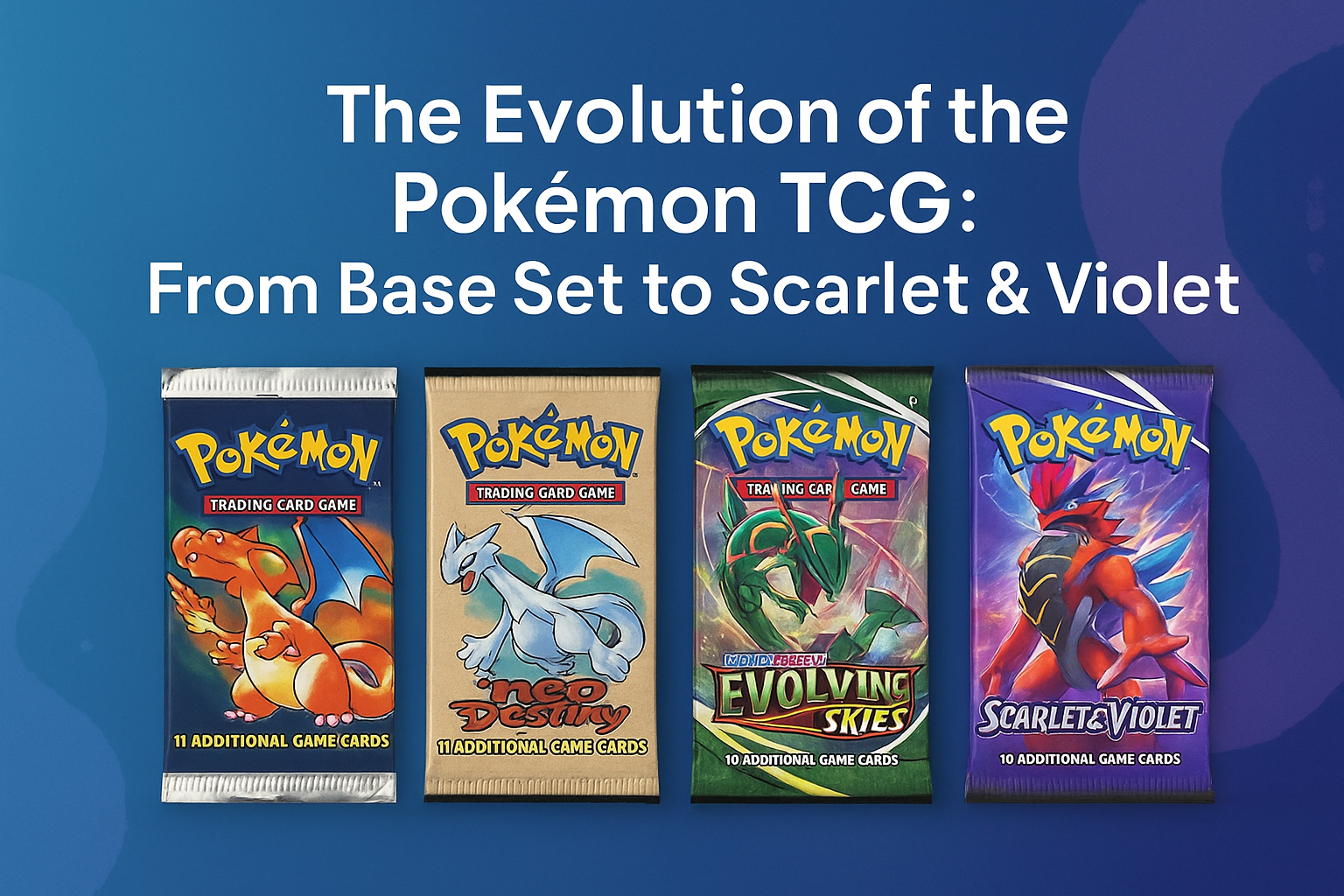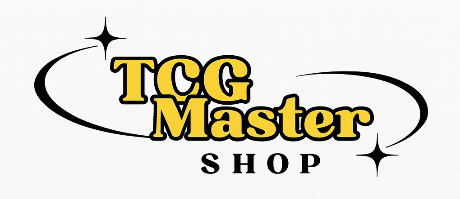The Evolution of the Pokémon TCG: From Base Set to Scarlet & Violet

The Evolution of the Pokémon TCG: From Base Set to Scarlet & Violet
Tracing more than 25 years of Pokémon Trading Card Game history—mechanics, artwork, competitive play, and the cultural moments that shaped the hobby.
The Pokémon Trading Card Game (TCG) is one of the most successful trading card franchises in history, standing alongside Magic: The Gathering and Yu-Gi-Oh! in terms of cultural impact, longevity, and collector demand. From its humble beginnings in 1996 in Japan to today’s Scarlet & Violet era, the game has gone through multiple design transformations, mechanical revolutions, and collector booms. In this long-form guide, we’ll break down the evolution of the Pokémon TCG era by era, with insights into collecting, playing, and investing across decades.
The Base Set Era (1996–1999)
When the Pokémon TCG launched, it mirrored the explosive popularity of the video games and anime. The Base Set introduced iconic cards like Charizard, Blastoise, and Venusaur—cards that remain symbols of the entire franchise today. The holo Charizard from Base Set became the holy grail for many collectors and still defines “grail card” culture. Simplicity was the defining trait: straightforward attacks, nostalgic artwork, and a card layout that has become legendary.
- Iconic cards: Base Set Charizard, Blastoise, Venusaur, Alakazam.
- Collector insight: Condition is everything—PSA 10 Base Charizard can fetch six figures.
- Cultural impact: Fueled the first “Pokémania” wave, with playground trades and local tournaments exploding worldwide.
Neo and e-Reader Series (2000–2003)
As Pokémon entered the Johto generation, the Neo sets introduced new Pokémon and more complex mechanics. Collectors fondly remember Neo Genesis for Lugia and the “Shining” cards from Neo Revelation and Neo Destiny. Meanwhile, the e-Series (Expedition, Aquapolis, Skyridge) pushed design innovation with e-Reader compatibility—scannable barcodes on cards that unlocked digital mini-games.
These sets also marked a turning point in artwork: more diverse art styles, experimental card frames, and full-art trainer cards. Skyridge Crystal Charizard is one of the crown jewels of the era.
EX Era (2003–2007)
The EX series marked the start of higher-HP, stronger Pokémon-ex. Sets like EX Deoxys and EX Team Rocket Returns are collector favorites for their unique cards. This era also introduced Gold Star Pokémon—extremely rare, alternate-color Pokémon cards with shimmering holo effects. Gold Stars remain some of the rarest and most valuable cards ever produced.
- Key cards: Gold Star Rayquaza, Gold Star Charizard, EX Deoxys cards.
- Collector tip: EX cards in mint condition are notoriously hard to find because holo borders easily scratch.
Diamond & Pearl to Black & White (2007–2013)
The Diamond & Pearl era introduced Level X cards, which layered new abilities onto existing Pokémon. Black & White later introduced Pokémon-EX and full-art designs that wowed collectors. This period also saw competitive play grow with more structured formats.
Collectibility rose thanks to creative artwork, and full-art legendaries became centerpieces of modern binders. For sealed collectors, this was a golden age: booster boxes were produced in smaller runs compared to later eras, making them scarce today.
XY Era (2014–2016)
XY brought Mega Evolutions into the TCG, with dazzling artwork. The breakout set was XY Evolutions (2016), which reprinted Base Set artwork with modern mechanics. XY Evolutions triggered a nostalgia boom in 2020 during the pandemic, as many adult collectors returned to the hobby. Prices skyrocketed for sealed boxes, demonstrating how reprints can still carry significant investment value.
Sun & Moon Era (2017–2019)
Sun & Moon introduced GX mechanics, rainbow rares, and alternate artwork styles. Collectors were enamored by Rainbow Rare Charizard-GX and Full-Art Eeveelutions. Competitive play also thrived, with powerful trainer cards and expanded deck strategies.
This era laid the groundwork for modern collector trends: alternate arts became highly desirable, and sealed boxes gained significant long-term demand.
Sword & Shield Era (2020–2023)
The Sword & Shield era brought V, VMAX, and VSTAR cards. Sets like Evolving Skies and Brilliant Stars delivered alternate art grails, including Umbreon VMAX (“Moonbreon”), Rayquaza VMAX, and Charizard VSTAR. Sword & Shield became one of the most popular modern eras due to the blend of strong gameplay and jaw-dropping artwork.
For collectors, Sword & Shield sealed products remain hot commodities, with Evolving Skies booster boxes selling far above MSRP due to Eeveelution alternate arts.
Scarlet & Violet Era (2023–present)
The Scarlet & Violet era reintroduced the EX mechanic and launched Special Illustration Rares (SIRs). Collectors adore the cinematic storytelling of these cards, which depict Pokémon in dynamic scenes. This era also emphasizes premium sealed products, with bundles, ETBs, and booster displays catering to both casual players and long-term collectors.
How the TCG evolved beyond gameplay
- Artwork evolution: From simple cartoonish styles to museum-quality alternate arts.
- Community growth: Competitive tournaments, YouTube unboxings, and graded card reveals fuel engagement.
- Investment side: Sealed products and rare singles became alternative assets for many collectors.
- Global reach: Japanese exclusives continue to attract international buyers, adding depth to collecting.
Collecting across eras—how to build a balanced portfolio
- Hold at least one sealed box from each major era you enjoy—diversification reduces risk.
- Focus on iconic cards per era (Charizard, Lugia, Rayquaza, Eeveelutions, Pikachu).
- Balance nostalgia with modern demand—older boxes for prestige, newer for liquidity.
- Mix English and Japanese for artwork diversity.
